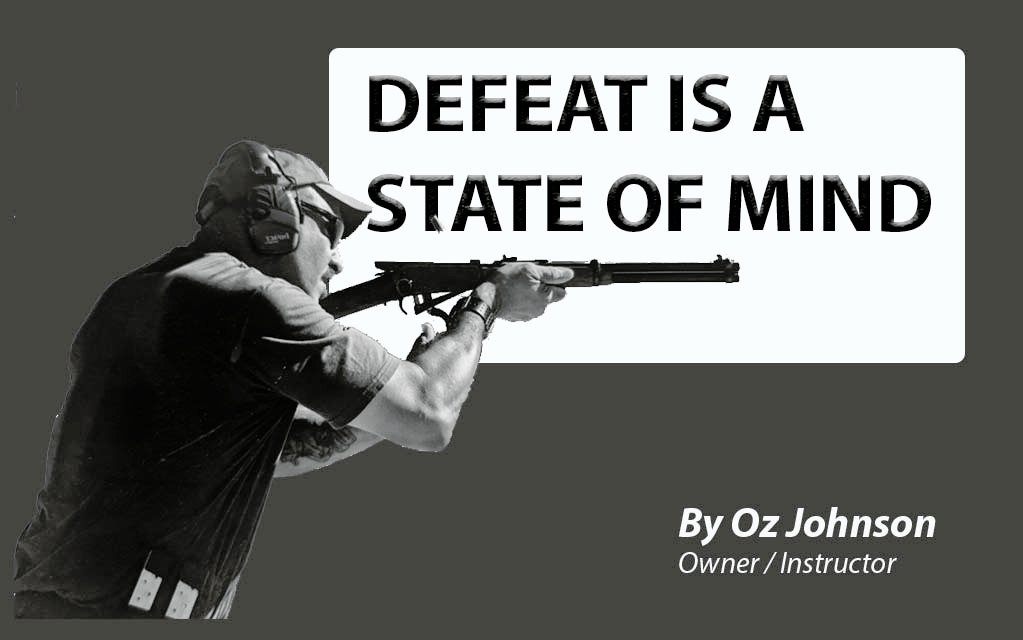Defeat is a state of mind
Unlocking the Reasons Behind Gun Ownership: What Drives You?

In an increasingly uncertain world, the distinction between self-defense and proactive engagement is crucial for firearms training programs. Classes covering tactical training and survival skills often differentiate between the roles of Defenders and Hunters. Defenders protect themselves and others, while Hunters may actively seek out threats, a mindset that can lead to dangerous outcomes if not properly supervised.
It is essential for instructors to avoid instilling aggressive mentalities in self-defense students. A focus on self-protection should prevail, as mixing self-defense education with a Hunter mentality may inadvertently encourage dangerous behavior. Observations have shown that beginners sometimes err in adopting a combative outlook, potentially compromising their safety.
Effective self-defense requires a blend of knowledge, training, and a solid understanding of local laws. The ultimate goal in any defensive situation is survival. Mastering firearm skills and understanding their application under pressure can significantly enhance personal safety.
Being a Hunter demands extensive training and situational awareness beyond just firearm possession. Decades of experience have illustrated that effective response to threats necessitates thorough training in firearms, heightened awareness, and decisive action. Training prepares individuals to respond quickly and intelligently in critical scenarios.
This article aims to inform those inclined towards a Hunter mindset about the importance of readiness. During active shooter events, a swift response can be vital, whether from a citizen or law enforcement personnel. However, carrying a concealed weapon does not inherently designate someone as a Hunter, as many factors contribute to the unfolding of a crisis.
While firearm ownership is a significant responsibility, proactive training is equally important. Understanding and properly utilizing a firearm greatly increases the likelihood of a successful defensive situation. This knowledge goes beyond mere possession.
In advanced training sessions, emphasizing a “Tactical Mindset” is often more critical than the firearm itself. This mindset should evolve naturally through education and real-world experience, rather than being forcefully adopted.
Both Hunters and Defenders must instinctively know how to operate their firearms. In emergencies, split-second decisions become paramount. Firearms can fail, so rapidly identifying and rectifying malfunctions becomes a matter of survival.
Static range practice often falls short of full readiness for real-life scenarios. Comprehensive defensive training should encompass various shooting positions, address malfunctions, and simulate dynamic conditions such as shooting while moving or taking cover behind barriers.
Introducing stress into training environments can enhance skill development. Although challenging, physically elevating heart rates and inducing stress prior to shooting drills better replicates the conditions faced during actual self-defense situations.
Students who complete rigorous courses often find themselves executing unexpected drills, learning to shoot from multiple positions, and acquiring techniques for effective movement during engagement. This adaptability is vital when real-life threats arise.
Despite common misconceptions, many gun owners, particularly those carrying firearms for self-defense, lack necessary training. Ownership alone does not guarantee improved survival odds; proper training is essential to prevent weapons from being turned against their owners in a conflict.
Ownership of a firearm does not mandate its carry for defensive purposes; many enjoy shooting as a recreational activity. For those who choose to carry for self-defense, it’s imperative to evaluate the adequacy of their training. Similar to an untrained individual carrying an EMT bag, a firearm without the necessary skills to use it effectively becomes nearly useless.
Training should extend beyond comfort zones. Committing to continuous personal development in defensive skills is critical. A competent instructor will challenge students appropriately, fostering skill advancement without pushing them beyond their current capabilities.
In conclusion, the journey of self-improvement in firearm proficiency and tactical awareness should never cease. Each individual must strive to be at their best, especially when the potential for confrontation exists.
For further inquiries or discussions regarding this subject, please reach out via email at JohnsonGroupTAC@gmail.com. The importance of ongoing training and proficiency cannot be overstated.


















